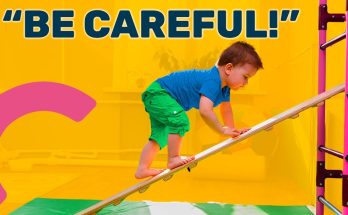Earwax, medically known as cerumen, plays a crucial role in maintaining ear health. It helps protect the ear canal by trapping dust, debris, and bacteria, preventing infections and irritations. However, an overproduction of earwax or improper cleaning methods can lead to blockages, discomfort, and even hearing loss. That’s why proper earwax removal is essential to keeping your ears clean and healthy. In this article, we explore some of the best earwax removal methods, focusing on both professional treatments and safe home remedies.
Why Earwax Removal Is Important
While earwax is a natural substance produced by glands in the ear canal, there are times when it can accumulate excessively or harden, causing a blockage. This condition, known as earwax impaction, is more common than most people realize. Some of the symptoms of earwax impaction include:
- Earache or discomfort in the ear
- Decreased hearing ability
- Ringing or buzzing in the ear (tinnitus)
- Itchiness or a feeling of fullness in the ear
- Dizziness or balance issues
Although earwax serves a protective function, when it becomes excessive or impacted, it can cause several issues, ranging from minor irritation to more serious complications. Therefore, it’s crucial to choose the right method of removal to prevent any damage to the ear canal or eardrum.
The Best Methods for Earwax Removal
When it comes to removing earwax, it’s important to be cautious. Improper techniques, such as inserting cotton swabs or other objects into the ear, can push the wax deeper into the ear canal, potentially causing harm. Here are the best, safest methods for earwax removal:
1. Professional Earwax Removal
One of the most reliable ways to ensure safe and effective earwax removal is to visit a healthcare professional. ENT (ear, nose, and throat) specialists are trained in safely extracting earwax from the ear canal. Professional earwax removal can involve several techniques, such as:
-
Irrigation: This method involves using a gentle stream of warm water to flush out the earwax. This technique is commonly used to clear out soft or loose wax.
-
Manual Extraction: Using specialized tools, an ENT professional can manually remove the earwax under a microscope. This is often necessary for hard or impacted wax.
-
Suction: Some professionals may use a small vacuum-like device to suck the wax out of the ear canal.
Professional earwax removal is safe and effective, ensuring that no damage is done to the ear canal or eardrum.
2. Ear Drops and Softening Agents
For individuals looking for a more convenient option, ear drops or softening agents can be effective for softening and loosening earwax before removal. Many over-the-counter products contain ingredients such as hydrogen peroxide, carbamide peroxide, or glycerin, which help soften earwax and make it easier to remove.
To use ear drops effectively:
- Tilt your head to one side.
- Place a few drops of the solution into the ear canal.
- Wait for about 5-10 minutes to allow the drops to soften the wax.
- Tilt your head in the opposite direction to let the wax drain out.
You can also use warm water to flush out the softened wax gently after using the drops.
3. Earwax Removal Kits
Earwax removal kits, available at pharmacies, typically come with a combination of softening agents and tools to help you clean your ears safely. These kits often include:
- Ear drops for softening earwax.
- Syringes or bulb aspirators for gentle irrigation and flushing of the ear canal.
These kits can be a good option for individuals who prefer a DIY approach to earwax removal. However, it’s important to follow the instructions carefully to avoid any risk of injury. If you experience pain or discomfort, discontinue use and seek professional help.
4. Olive Oil or Baby Oil
Natural oils like olive oil and baby oil can be used as a gentle solution for softening earwax. Applying a few drops of warm (not hot) olive oil into the ear canal can help soften the wax, making it easier to remove. Simply tilt your head, place the oil in your ear, and let it sit for 5-10 minutes before draining it out.
This method is safe and effective for many people, but it should be avoided if you have a perforated eardrum or an active ear infection.
5. The Use of a Cotton Swab (With Caution)
While it’s not recommended to insert cotton swabs deep into the ear canal, they can be used carefully on the outer ear to remove any wax buildup that has migrated outward. Gently wipe the entrance of the ear, taking care not to push wax further in. Cotton swabs should never be used for deeper cleaning of the ear canal, as they can push wax deeper, causing blockages and even injury.
When to Seek Professional Help
If you’re experiencing symptoms of earwax impaction and home remedies don’t provide relief, it’s best to consult a healthcare professional. Never attempt to remove earwax if you have a history of ear problems, such as perforated eardrums, ear infections, or a history of hearing loss. A healthcare provider can evaluate the situation and determine the safest course of action.
Conclusion
Earwax removal is essential for maintaining ear health, but it should be done carefully to avoid injury. The best earwax removal methods range from professional cleaning to gentle at-home solutions like ear drops, natural oils, and earwax removal kits. If you’re unsure about how to remove earwax or are experiencing symptoms of impaction, seeking professional help is always the safest option.
Remember, while earwax serves a protective role in the body, removing excessive or impacted earwax is important for your comfort and overall ear health. By following safe and effective methods, you can keep your ears clean, clear, and healthy.



